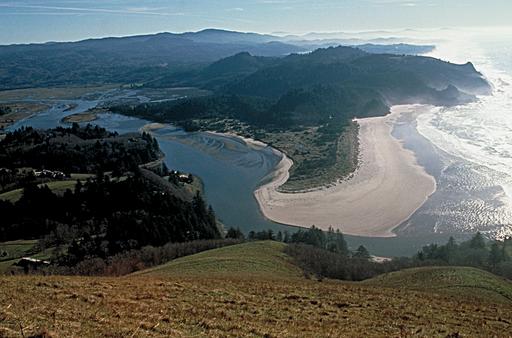
In an earlier lesson, I described soil as the "heart" of the Critical Zone. With that analogy in mind, perhaps you can consider water to be the “blood” of the Critical Zone. Once precipitated onto a landscape, water can be stored at the surface in various reservoirs depending on the climate of a region, flow across the surface, or infiltrate into and flow through the subsurface domain. Along the various pathways, water can transfer dissolved constituents from one portion of the Critical Zone to another. Those constituents may degrade water quality, precipitate minerals, or provide sustenance for life, among many other processes. As in earlier lessons, you should not be concerned with memorizing and repeating various definitions for the many processes you will read about and study. Instead, begin by securely grasping the concept of the water cycle. Once you have mastered the water cycle, move on to learn about the chemistry of natural waters and human influences on water in the Critical Zone.
What will we learn about in Lesson 6?
- The role of the ocean in the water cycle
- The difference between evaporation, sublimation, and evapotranspiration
- The difference between condensation and precipitation
- Various reservoirs in which water is stored in and moves through the Critical Zone
- The difference between surface runoff and streamflow
- The distribution of water on Earth and in the Critical Zone
- Human influences on water distribution and quality
- The use of online surface water data
- Basic chemistry of some natural waters
Learning Objectives
By the end of this lesson you should be able to:
- Describe the water cycle using a schematic diagram
- Obtain and interpret online surface water data
- Discuss basic chemistry of some natural waters
- Discuss human influences on the availability and quality of water
What is due for Lesson 6?
Lesson 6 will take us one week to complete As you work your way through these online materials for Lesson 6, you will encounter additional reading assignments and hands-on exercises and activities. The chart below provides an overview of the requirements for Lesson 6. For assignment details, refer to the lesson page noted.
Please refer to the Calendar in Canvas for specific time frames and due dates.
| ACTIVITY | LOCATION | SUBMISSION INFORMATION |
|---|---|---|
| Report on StreamStats | page 6 | Post to the Lesson 6 - StreamStats dropbox in Canvas dropbox |
Questions?
If you have any questions, please post them to our Questions? discussion forum (not e-mail), located under the Discussions tab in Canvas. I will check that discussion forum daily to respond. While you are there, feel free to post your own responses if you, too, are able to help out a classmate.